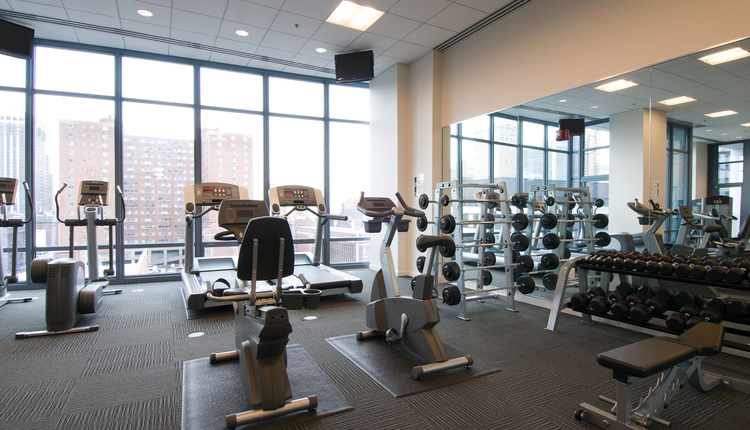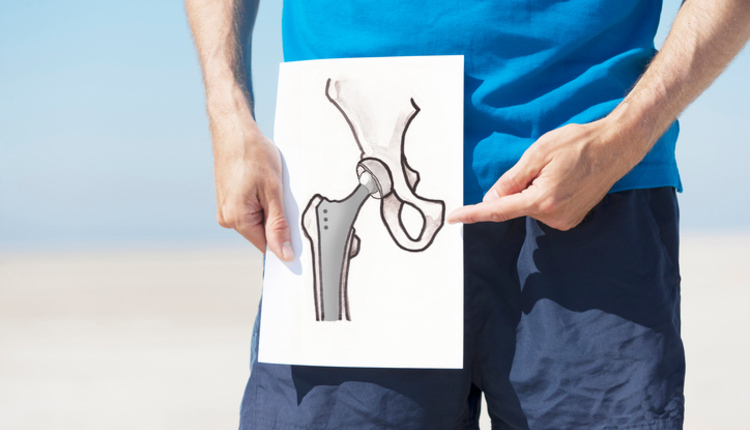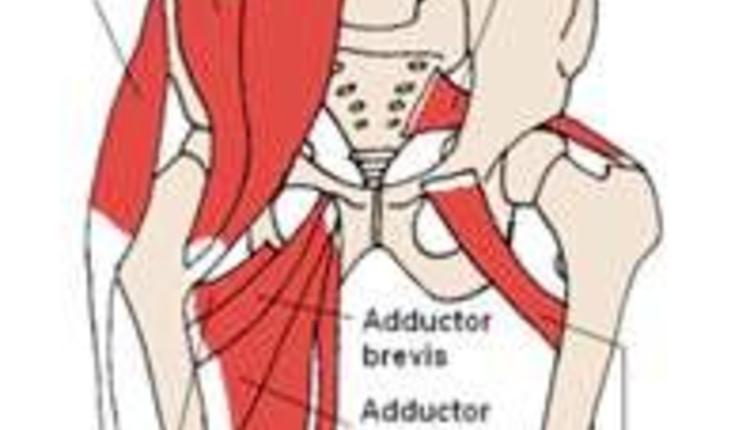
There is a multitude of exercise equipment at your fingertips to use with your clients. Ranging from traditional stationary machine based, free-weight, cable, to TRX, kettlebells and much more. Exercise equipment is evolving and changing. However, one element that hasn't changed is the physics and biomechanics behind using the equipment. In this article, we will review what exercise equipment is designed or intended to do, what client can benefit from these types of equipment versus what would be harmful and modifications of exercises explaining the 'why.'
History of exercise equipment...
The history of training dates back to the earliest civilizations, such as Greek and Chinese. The mythical story of Milo of Croton and his particular training method is well known. His principle of training was considered a beginning of training with progressive load (Stojiljkovic, N., et al. 2013). Predecessors of resistance training didn't have at their disposal the sophisticated equipment, which is available today. Weight training has held increasing popularity stemming from the 1970s, until today despite continued change, due to technology and innovations.
There are several different types of exercise equipment to improve flexibility, strength or conditioning.
Nautilus machines
The foundation of nautilus machines, enables a person to push or pull a desired weight through a guided range of motion. This machine is effective for teaching proper instruction. It is ideal for clients who have never exercised before or require instruction and those who really need to learn proper technique.
Cable machine
Cable machines are equipment used for strength or functional training. It consists of a rectangular, vertically oriented based frame that consists of a weight stack at each end. Cables connect the handles to the weight stacks, which can be adjusted at various heights. This design allows a variety of movements to be performed on the apparatus. The cable machine is ideal for clients who are interested in working on multidirectional movement patterns. Cable machines replicate controlled movement. Cable machines are ideal for clients who have experience with weight training and exercising and who understand more complicated movements that cable machines can reproduce.
Free weights Free weights include dumbbells, barbells, medicine balls, sandbags and kettlebells. Unlike, cable machines, they do not constrain a client to specific, fixed movement.
Free weights do require more effort from one's stabilizing musculature. Free weights are effective for clients who again have exercise experience and who have completed physical therapy. Free-weights are ideal for clients who want to work muscles in different planes, as well as on different surfaces.
Kettlebells
Kettlebells have undergone a face-lift since being introduced many years ago. The kettlebell has re-emerged in popularity, like Crossfit (Farrar, R., et al., 2010). Despite popularity, clinical data on their efficacy is limited. Spierer, K., et al., examined whether kettlebell training transfers strength and power to weightlifting and powerlifting exercises and improves muscular endurance. Results demonstrated a transfer of power and strength in response to 10 weeks of training. They are designed for clients who have weightlifting experience, want to improve strength and power and possess strong dynamic trunk control. They should not be used with clients who have a history of a rotator cuff repair. Biomechanically, the quick powerful movement places a tremendous stress on the surgical site.
TRX equipment
TRX is suspension training, which is comprised of ropes and webbing. This approach uses one's own bodyweight. The benefits of this approach is that it enables someone to move in many different directions, loading one to multiple joints, improving one's flexibility then strength. However, due to the principle of overload, which states that a greater than normal stress or load on the body is required for training adaptation to take place. Meaning, for muscle to grow (hypertrophy) or to be able to perform for extended bouts of time (muscular endurance), a load or weight needs to be applied. Because the TRX is a strap and webbing, there is no external resistance applied to the user. A client can still improve strength, however, physiologically won’t see anatomical adaptation due to the principle described.
Clinically, TRX is effective for helping clients who have undergone soft-tissue injuries, and shoulder impingement, to enhance flexibility, prior to strengthening. Lastly, TRX can be used to help clients improve dynamic stabilization from the ground up.
TRX should not be used with clients who have a history of shoulder subluxation, dislocation, have a history of multiple injuries to one area or clients with disc injuries. Biomechanically, all of these conditions could place excessive stress to an injured area, further stressing connective tissue, muscles and supportive structures resulting in pain. However, despite lack of quality evidenced-based research, TRX can be useful with training clients, but long-term gains remain questionable.
There are a multitude of pieces of exercise equipment at your fingertips to use as a fitness professional. It is important to understand the science behind the movement, remembering safety first, before program design and exercise prescription.
History of exercise equipment...
The history of training dates back to the earliest civilizations, such as Greek and Chinese. The mythical story of Milo of Croton and his particular training method is well known. His principle of training was considered a beginning of training with progressive load (Stojiljkovic, N., et al. 2013). Predecessors of resistance training didn't have at their disposal the sophisticated equipment, which is available today. Weight training has held increasing popularity stemming from the 1970s, until today despite continued change, due to technology and innovations.
There are several different types of exercise equipment to improve flexibility, strength or conditioning.
Nautilus machines
The foundation of nautilus machines, enables a person to push or pull a desired weight through a guided range of motion. This machine is effective for teaching proper instruction. It is ideal for clients who have never exercised before or require instruction and those who really need to learn proper technique.
Cable machine
Cable machines are equipment used for strength or functional training. It consists of a rectangular, vertically oriented based frame that consists of a weight stack at each end. Cables connect the handles to the weight stacks, which can be adjusted at various heights. This design allows a variety of movements to be performed on the apparatus. The cable machine is ideal for clients who are interested in working on multidirectional movement patterns. Cable machines replicate controlled movement. Cable machines are ideal for clients who have experience with weight training and exercising and who understand more complicated movements that cable machines can reproduce.
Free weights Free weights include dumbbells, barbells, medicine balls, sandbags and kettlebells. Unlike, cable machines, they do not constrain a client to specific, fixed movement.
Free weights do require more effort from one's stabilizing musculature. Free weights are effective for clients who again have exercise experience and who have completed physical therapy. Free-weights are ideal for clients who want to work muscles in different planes, as well as on different surfaces.
Kettlebells
Kettlebells have undergone a face-lift since being introduced many years ago. The kettlebell has re-emerged in popularity, like Crossfit (Farrar, R., et al., 2010). Despite popularity, clinical data on their efficacy is limited. Spierer, K., et al., examined whether kettlebell training transfers strength and power to weightlifting and powerlifting exercises and improves muscular endurance. Results demonstrated a transfer of power and strength in response to 10 weeks of training. They are designed for clients who have weightlifting experience, want to improve strength and power and possess strong dynamic trunk control. They should not be used with clients who have a history of a rotator cuff repair. Biomechanically, the quick powerful movement places a tremendous stress on the surgical site.
TRX equipment
TRX is suspension training, which is comprised of ropes and webbing. This approach uses one's own bodyweight. The benefits of this approach is that it enables someone to move in many different directions, loading one to multiple joints, improving one's flexibility then strength. However, due to the principle of overload, which states that a greater than normal stress or load on the body is required for training adaptation to take place. Meaning, for muscle to grow (hypertrophy) or to be able to perform for extended bouts of time (muscular endurance), a load or weight needs to be applied. Because the TRX is a strap and webbing, there is no external resistance applied to the user. A client can still improve strength, however, physiologically won’t see anatomical adaptation due to the principle described.
Clinically, TRX is effective for helping clients who have undergone soft-tissue injuries, and shoulder impingement, to enhance flexibility, prior to strengthening. Lastly, TRX can be used to help clients improve dynamic stabilization from the ground up.
TRX should not be used with clients who have a history of shoulder subluxation, dislocation, have a history of multiple injuries to one area or clients with disc injuries. Biomechanically, all of these conditions could place excessive stress to an injured area, further stressing connective tissue, muscles and supportive structures resulting in pain. However, despite lack of quality evidenced-based research, TRX can be useful with training clients, but long-term gains remain questionable.
There are a multitude of pieces of exercise equipment at your fingertips to use as a fitness professional. It is important to understand the science behind the movement, remembering safety first, before program design and exercise prescription.

















